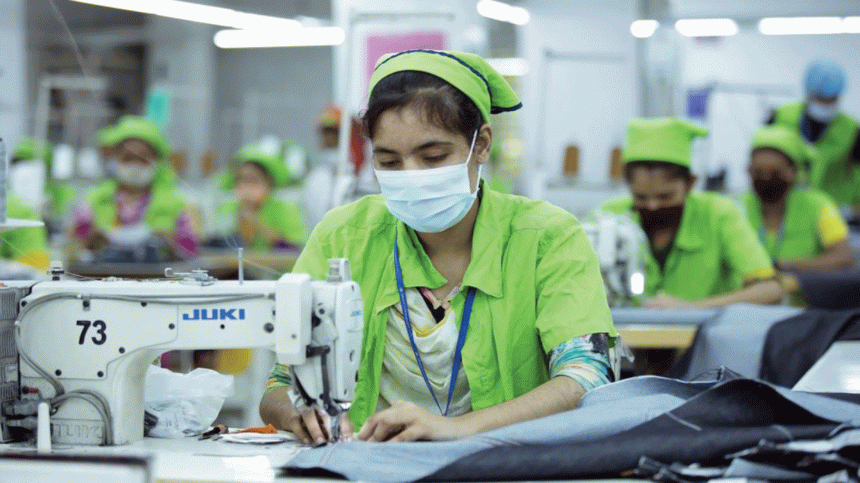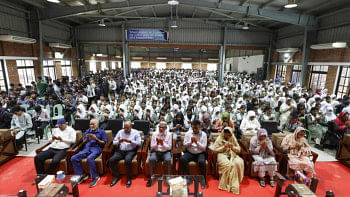Apparel behemoths expanding into new sectors

Textile and garment behemoths in Bangladesh have started ploughing their surplus wealth into new sectors in order to tap the potential in an economy that is growing at a healthy clip and consumers' purchasing power is rising.
Immensely successful garment and textile millers have expanded into sectors such as electricity generation, real estate, agriculture, dairy, hospitality, banking, tea estate, computer chips making, insurance, capital market, health, education, leasing, e-commerce, construction, pharmaceuticals, and economic zones.
Textile and garment manufacturers have been playing a vital role in the economy by earning foreign currencies and creating jobs since the late 1970s when a group of local entrepreneurs sowed the seed for a successful sector exploiting the then quota system.
They have been contributing nearly 85 percent to national export earnings for more than three decades. Currently, over 100 textile and garment factories register an annual export turnover of $500 million, industry people say.
One of the top garment and textile manufacturers that has invested in other sectors like bank, insurance, media, and tea estate is Ha-Meem Group.
"Although I have started investing in other sectors, my prime focus is still textile and garment sector," said AK Azad, chairman and chief executive officer of Ha-Meem.
The group is expanding its footprint in the textile and garment sector by producing more denim and recycled fabrics with a view to meeting the demand of international retailers and brands.
DBL Group, one of the largest textile and garment manufacturers in Bangladesh, has invested hugely in tiles, ceramic and pharmaceuticals sectors as well as in digital technologies, agricultural and dairy products.
"These areas offer huge growth potential," said MA Jabbar, managing director of DBL Group.
He also said the core business of DBL is apparel and garment and the group has already expanded a lot.
Ananta Group, another textile and garment group, has ploughed money into real estate, e-commerce, hotel, and leasing companies.
"Despite the huge investment in other sectors, our primary focus lies in textile and garment," said Sharif Zahir, managing director of Ananta Group.
A textile and garment entrepreneur whose company makes high-end value-added garment items for western buyers says he has already invested several millions of dollars to generate electricity.
The entrepreneur plans to spend further to produce 1,600 megawatts of power.
Md Saiful Islam, president of the Metropolitan Chamber of Commerce and Industry, which mainly represents industrial conglomerates, says big groups are investing more in diversified sectors as the risk is low in the domestic market whereas the profit is high.
"The economy is expanding and new opportunities are emerging. On the other hand, the risks in the export markets are higher and there is fierce competition in the international markets as well."
Bangladesh is expected to be the ninth-largest consumer market globally by 2030, leaving behind the United Kingdom and Germany, said a report by HSBC Global Research last year. In 2021, the country was the 16th largest consumer market worldwide.
"The investment and the growth in the textile and garment sector are also increasing simultaneously," Islam said.
Md Amin Helaly, senior vice-president of the Federation of Bangladesh Chambers of Commerce and Industry, thinks when surplus wealth is generated, entrepreneurs go for new ventures and in Bangladesh, it is happening now.
"Now is the time for Bangladesh to take businesses to the next level as the opportunity has been created."
For instance, the business leader says, Bangladesh needs to produce textile machinery since the country is very strong in the sector.
The world's second-largest apparel shipper, Bangladesh's share in the global garment trade increased to 7.9 percent in 2022 from 6.4 percent in 2021, according to the World Trade Organisation.
Large groups' foray in the new sectors does not mean that they are deserting the old garment and textile sectors. Instead, they have invested millions of dollars to set up green factories.
Currently Bangladesh is the global champion in green building having 200 LEED-certified factories while another 500 units await a similar recognition.
The Leadership in Energy and Environmental Design is the most widely used green building rating system globally.
Besides, local garment and textile millers are increasing the production of high-end value-added apparels in a move that would yield the prices that are higher than currently fetched by basic garment items.
"Small companies should be given the opportunities so that they can become bigger one day," Helaly added.

 For all latest news, follow The Daily Star's Google News channel.
For all latest news, follow The Daily Star's Google News channel. 







Comments